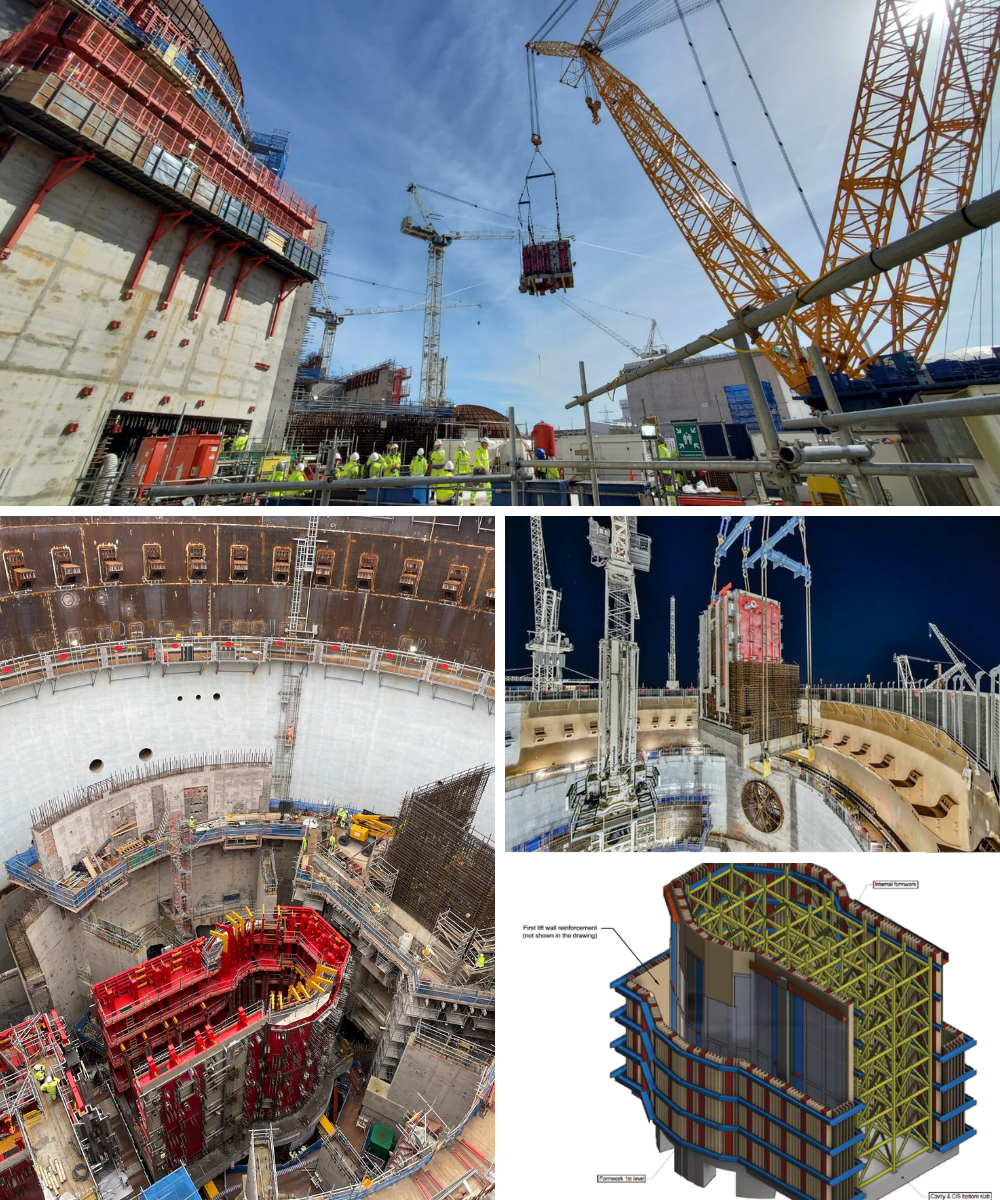 Two large jack-up vessels have arrived off the coast of Hinkley Point C in Somerset, where a new NPP is being built, to support the project’s offshore work as infrastructure construction progresses.
Two large jack-up vessels have arrived off the coast of Hinkley Point C in Somerset, where a new NPP is being built, to support the project’s offshore work as infrastructure construction progresses.
Neptune (60 metres long) and Sea Challenger (132 metres long), will enable installation of key components for the power station’s cooling system. Each vessel uses four legs to elevate itself above sea level so it can operate safely without being impacted by waves and currents. Sea Challenger has a helideck, and both can accommodate up to 60 people onboard. Such vessels are regularly used to build offshore wind farms. The platforms’ cranes have a combined lifting capacity of 1,500 tonnes.
Six vertical shafts will be installed at a depth of more than 20-metres, as part of ongoing work to connect some 10 kilometres of tunnels with the seabed. Once installed, miners will dig a horizontal connection between the bottom of the shaft and the tunnel. This is the first part of linking the intake and outfall heads with the tunnels. These 5,000-tonne structures were lowered onto the seabed last summer and will circulate water to the two reactors. Work to install the shafts will continue into the Autumn.
When complete, Hinkley Point C will comprise two 1,630 MWe EPR reactors supplied by EDF. Construction began in December 2018 but the project has faced delays. In May 2022 EDF, following a review of the project, confirmed that the plant would begin operating a year later than planned and could cost up to £3bn ($3.7bn) more to build than originally budgeted. This has put the start date for unit 1 at June 2027, with the cost estimated at £25-26bn, an increase on the previous estimate of £23bn. It was originally estimated to cost £18bn.
Once the shafts, which will go 20m (70ft) into the seabed, are installed, miners will dig a horizontal connection between them and the cooling tunnels.
Jonathan Smith, area delivery director, said this is one of the final stages of the offshore operations, which will involve teams from EDF, Balfour Beatty and New Wave Solutions working together “to deliver yet another incredible feat of engineering”. Roger Frost, director of construction company Balfour Beatty, said arrival of the vessels was a significant step forward.
Meanwhile, a new component of the reactor pools has been installed in the reactor building of Hinkley Point C unit 1. The prefabricated pool of the reactor cavity weighing 730 tons was installed using a giant Big Carl crane. The element is a vital part of the inner structures of the reactor building, and Tractebel played a crucial role in its design, detailing, and site support. Its complexity is due to its complex geometry and delicate lifting conditions. Other factors such as the interface with multiple components of equipment, its high-density reinforcement and complex construction made this lift a challenging task.
part of the inner structures of the reactor building, and Tractebel played a crucial role in its design, detailing, and site support. Its complexity is due to its complex geometry and delicate lifting conditions. Other factors such as the interface with multiple components of equipment, its high-density reinforcement and complex construction made this lift a challenging task.
Representatives of Tractebel said the operation opened the way for installation of the dome of the reactor building, which is scheduled for later this year. Since 2016, Tractebel has been part of the S-ICOS-H consortium (together with Egis and Setec), which carries out the detailed civil engineering design of the nuclear island buildings at Hinkley Point.
"This new milestone in the construction of Unit 1 is the result of our teams’ rigorous and responsive work. As the designer of these elements from scratch, we are proud of our contribution to these achievements,” said Andrea Carletto, Head of Nuclear UK at Tractebel. “This lifting demonstrates once again our ability to carry out the civil work design for complex low-carbon energy projects.”
Image (top left): Two jack-up vessels have arrived off the coast of Hinkley Point C in Somerset, as the project’s offshore work moves into its final phase (courtesy of EDF)
Image (bottom right): The reactor cavity precast pool is lifted into its final position inside the reactor building of Hinkley Point C Unit 1 by “Big Carl” (courtesy of Tractebel)



